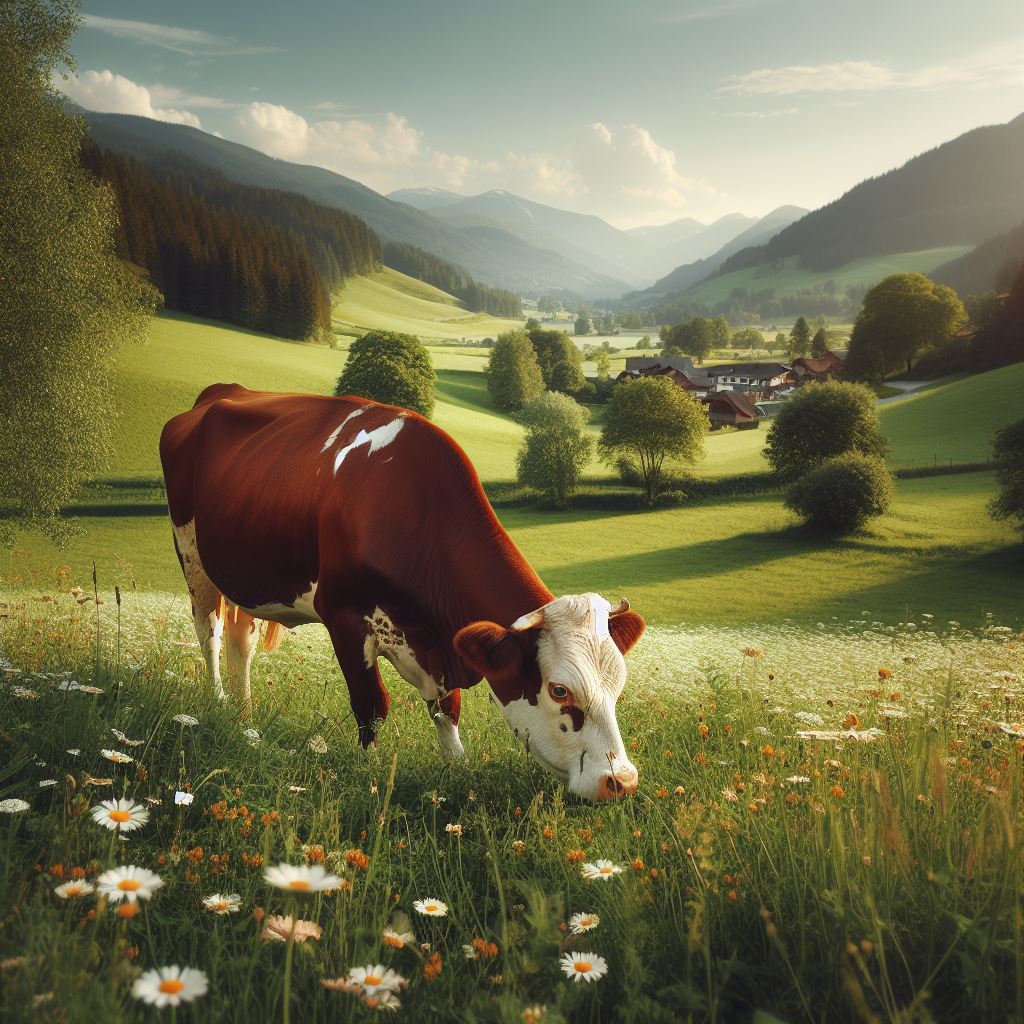Making history as the first transgenic cow to produce human insulin in her milk is a humble brown bovine from the south of Brazil. The discovery, made possible by researchers from the Universidade de São Paulo and the University of Illinois Urbana-Champaign, may usher in a new age in insulin manufacturing and one day remove the need for expensive and scarce medications for diabetics.
Mother Nature designed the mammary gland as a factory to make protein really, really efficiently. We can take advantage of that system to produce a protein that can help hundreds of millions of people worldwide.
Matt Wheeler, professor in the Department of Animal Sciences, part of the College of Agricultural, Consumer and Environmental Sciences.
Wheeler is the principal author of a recent Biotechnology Journal paper that details the creation of the insulin-producing cow, a proof-of-concept accomplishment that may be expanded upon receiving FDA permission and more testing.
In a recent publication published in the Biotechnology Journal, Wheeler is the main author and describes the development of the insulin-producing cow, a proof-of-concept achievement that might be furthered with FDA approval and more testing.
In the old days, we used to just slam DNA in and hope it got expressed where you wanted it to.
We can be much more strategic and targeted these days. Using a DNA construct specific to mammary tissue means there’s no human insulin circulating in the cow’s blood or other tissues. It also takes advantage of the mammary gland’s capabilities for producing large quantities of protein.
Matt Wheeler
The researchers made an unsuccessful effort to conceive the cow using conventional artificial insemination methods once she reached adulthood. Rather, they used hormones to induce her initial lactation. There was some milk produced throughout the lactation, but not as much as would happen following a good pregnancy. Nevertheless, the milk contained remarkably high levels of human proinsulin and insulin.
Our goal was to make proinsulin, purify it out to insulin, and go from there. But the cow basically processed it herself. She makes about three to one biologically active insulin to proinsulin.
The mammary gland is a magical thing.
Matt Wheeler
There were a few grammes of insulin and proinsulin expressed per litre in the milk, which would need to be isolated and purified for use. However, the team is unable to determine the precise amount of insulin that would be produced during regular lactation due to the hormonal induction of lactation and the lower-than-expected milk volume.
Wheeler estimates that an average Holstein cow produces 40 to 50 litres of insulin each day, which is a lot of insulin assuming a cow could produce one gramme of insulin per litre. especially since 0.0347 milligrams is the standard unit of measurement for insulin.
And that’s just one liter; Holsteins can produce 50 liters per day. You can do the math.
The team is hopeful that by cloning the cow again, they would be able to successfully conceive and go through entire lactation cycles in the offspring. In the end, they want to produce transgenic bulls that can mate with the females and produce transgenic progeny that can be utilised to start a herd with specific purposes. According to Wheeler, even a small herd could easily surpass current techniques for manufacturing insulin, such as transgenic yeast and bacteria, and could accomplish so without the need for highly developed infrastructure or facilities.
With regard to mass-producing insulin in milk, you’d need specialized, high-health-status facilities for the cattle, but it’s nothing too out of the ordinary for our well-established dairy industry.
We know what we’re doing with cows?
The team plans to re-clone the cow and is optimistic they’ll achieve greater success with pregnancy and full lactation cycles in the next generation. Eventually, they hope to create transgenic bulls to mate with the females, creating transgenic offspring that can be used to establish a purpose-built herd. Wheeler says even a small herd could quickly outcompete existing methods transgenic yeast and bacteria — for producing insulin and could do so without having to create highly technical facilities or infrastructure.
Also Read| Diagnosis of prostate cancer made advanced by microscopy plus deep learning
Before transgenic cows to provide insulin for the world’s diabetes, FDA permission and an effective mechanism to gather and purify insulin products would be required. Wheeler, though, is optimistic that day will arrive.
Source: College of Agricultural, Consumer and Environmental Sciences, ACES News
Journal Reference: Qian, Xi, et al. Paulo S. Monzani, Juliano R. Sangalli, Rafael V. Sampaio, Samuel Guemra, Renato Zanin, Paulo R. Adona, Maria A. Berlingieri, Luiz F. C. Cunha‐Filho, Irma Y. Mora‐ Ocampo, Carlos P. Pirovani, Flávio V. Meirelles, Matthew B. Wheeler, Otavio M. Ohashi. Human proinsulin production in the milk of transgenic cattle. Biotechnology Journal, 2024; 19 (3). https://doi.org/10.1002/biot.202300307.
Last Update






